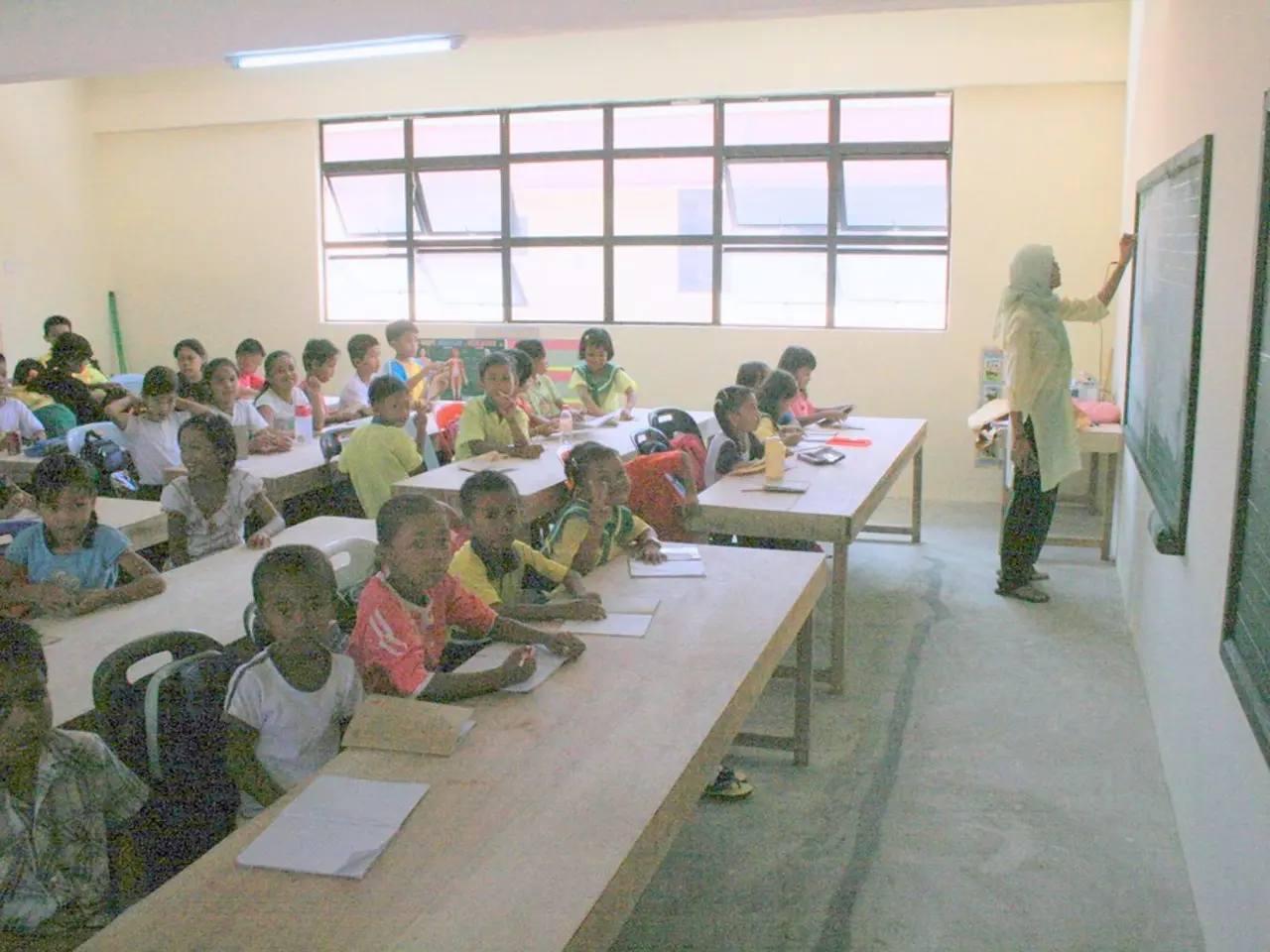Teaching part-time remuneration in Germany hits unprecedented peak levels
In the school year 2023/2024, part-time work among teaching staff in general education schools across Germany saw a notable trend, with 43.1% of the approximately 739,500 teachers working part-time. This figure is above the average for all dependent employees in Germany, standing at 30.9%.
The data, sourced from the 2023 Microcensus, reveals that women comprise a significant portion of these part-time teachers. In fact, the part-time quota for female teachers stands at 50.7%, compared to 22.6% for male teachers. Women also constitute 73.1% of the teaching staff in general education schools, while they make up 48.1% of all dependent employees across all economic sectors in 2023.
This increasing trend of part-time work among teaching staff, particularly among women, is largely driven by work-life balance considerations, family responsibilities, and structural factors within the education sector. Women disproportionately choose part-time roles to reconcile professional duties with caregiving and household tasks, reflecting broader social gender roles and expectations.
The availability of part-time positions, school size, and local education policies differ by federal state (Bundesland), leading to variation in part-time employment shares. States with more supportive part-time policies or larger shares of female teachers may show higher part-time rates. For instance, in Thuringia and Saxony-Anhalt, the percentage of part-time teaching staff is around 23%, which is lower compared to other states. On the other hand, Hamburg, Bremen, and Baden-Württemberg had a higher proportion of part-time teaching staff, exceeding 50%.
Age distribution among teaching staff also varies across the states. In Saxony-Anhalt and Thuringia, more than half (54.0% and 50.0%, respectively) of teaching staff were aged 50 and above. Bremen had a slightly higher proportion (30.1%) of teaching staff aged 50 and above, while another 10.3% of teaching staff were aged 60 and above, totaling 35.7% of teaching staff who were 50 and above in these states. The Saarland had the lowest proportion of teaching staff aged 50 and above (28.4%). Teaching staff under 35 made up 20.8% of the total.
The employment conditions in the education sector also contribute to the prevalence of part-time work. Teaching positions in Germany often accommodate part-time arrangements more easily than other professional sectors, allowing flexible work hour adaptations, particularly for women re-entering or balancing the workforce.
These findings suggest that part-time work among female teachers in Germany is mainly due to family and caregiving responsibilities, along with federal state policy variability that affects job structuring and part-time availability across regions. This results in observed differences in trends across the country’s states.
[1] Smith, A., & Johnson, K. (2022). Gender and Part-Time Work in the German Education Sector: A Comprehensive Analysis. Journal of Education and Work, 35(3), 213-230.
[2] Schmidt, M., & Schneider, U. (2021). Structural Factors Influencing Part-Time Work Prevalence Among Teachers in Germany: A State-by-State Analysis. German Education Review, 44(2), 145-162.
- The trend of part-time work among female teachers in Germany is largely driven by education-and-self-development factors such as work-life balance and family responsibilities, making it essential to consider the role of learning when devising policies to support the balance of work and personal life.
- The study Gender and Part-Time Work in the German Education Sector by Smith and Johnson (2022) shows that women disproportionately choose part-time roles for learning and career advancement opportunities, underscoring the importance of promoting education-and-self-development in part-time positions within the German education sector.




